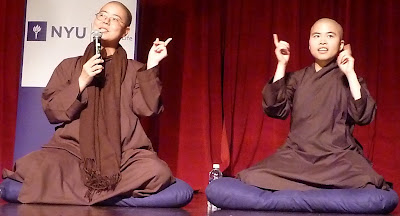If you like artistic creativity in your spiritual life—and who doesn’t?—or simply if you enjoy music and poetry—ditto—there are two great events coming soon to New York City. New York Open Center will host Amir Vahab for an evening of musical interpretation of Sufi poems, and the Anthroposophical Society will present Andy Leaf, who will frame the verse of Robert Frost in the Society’s spiritual science perspective. From the respective publicity:
 |
| Courtesy NY Open Center |
This evening, Amir Vahab and ensemble will perform songs selected from the poetry of the great Sufi masters Rumi and Hafiz and other legendary mystical poets to transport us to 13th century Persia with all its beauty and exoticism. The ensemble also will perform lively traditional music from Turkish, Kurdish, and other sources featuring the mystical reed flute, ancient lutes, and the daf drum. The concert will conclude with a dynamic drumming performance that echoes the universal heartbeat of existence.
Since college days in the mid 1950s, Andy Leaf has had a passionate interest in the spirituality expressed in the poetry of Robert Frost and Emily Dickinson. This Saturday program will be an informal exploration of how spiritual science can enhance appreciation of Frost’s poetry in ways conventional criticism does not—and which can, in turn, enrich our experience of truths revealed in Anthroposophy. The focus will be on a few selected, representative poems.
Andy Leaf has studied Anthroposophy since 1967. He served as a teacher and administrator in the Waldorf School of Garden City, New York from 1967 to 1978. Subsequently, he has been an instructor, program designer, and consultant in training and organizational development. As principal of his own consulting practice, Leaf & Associates, he has consulted with Waldorf Schools in the United States and Canada on issues of organizational health and leadership.
























































































